Introduction
This briefing paper describes the current state of children’s social care for looked after children in the South East based on available local and national statistics and our own interpretation. Data are drawn primarily from the “Children looked after in England including adoptions” publications by the Department for Education (DfE), and from the South East regional quarterly benchmarking exercise. The report is organised by theme, and isn’t comprehensive; there’s far more evidence out there than would fit into a single briefing paper.
The numbers support the same message we hear from stakeholders in the care system, including the young people themselves: it’s crucial that we try new and innovative methods to improve the status quo. The South East RCC will help Local Authorities to overcome this challenge through the delivery of our 5 strategic priorities:
1. Centring activity around the voices of care experienced children and young people
2. Commissioning care placements for children with complex needs
3. Bringing all stakeholders and partners in the region together
4. Developing the local workforce, and
5. Creating a sustainable RCC which meets the needs of the South East
Message 1: We’re still accommodating historically high numbers of children and young people
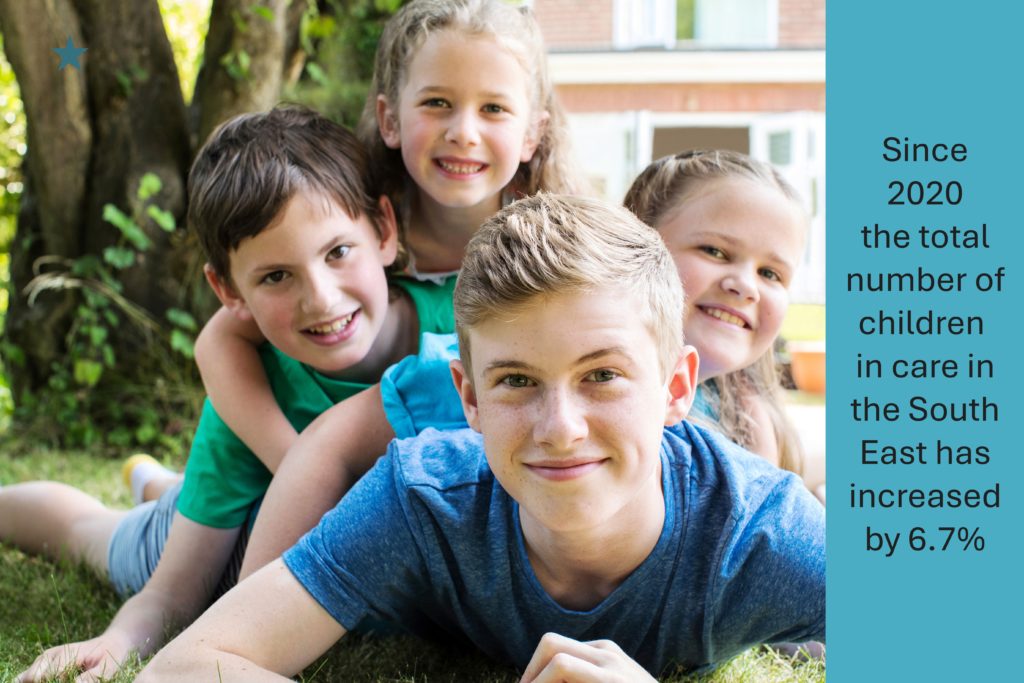
In England, as of March 31st 2024 there were a total of 83,630 children looked after (CLA). Of these, 11,180 were accommodated by local authorities (LAs) in the South East – an average of 56 per 10,000 children. While rates vary across individual LAs, with some seeing recent dips in care rates, since 2020 the regional total has increased by 6.7% (750 children).
Last year 5,582 children entered the care system in the South East representing 16.8% of new entrants nationally. This number has gone up every year since 2020, at which date 4,380 children entered the care system in the South East – including significant numbers of asylum seeking children.
Rates of children leaving care to adoption or special guardianship are lower in the South East than the national average, suggesting we may have potential as a region to do more to find permanent homes for the children in our care.
The sheer volume of care activity in the region presents challenges in securing suitable placements, offering local provision, managing costs, and supporting children. Every LA has a sufficiency duty to provide sufficient appropriate local care. Every strand of the RCC business plan will have a role in helping to address these challenges.
Message 2: Support needs for unaccompanied children remain historically high
Of 83,630 looked after children in England, 7,380 were unaccompanied asylum seekers (UAS children). UAS children disproportionately arrive in Kent, due to its geographical proximity to the English Channel.
LAs in the South East currently accommodate around 1,500 UAS children, rising from 1,120 in March 2022. Where this cohort historically represented around 10% of our regional CLA population, the figure is now approaching 15%. While numbers are down in some LAs, they’re up year-on-year by 24% across the region, compared to 5% nationally.
This necessarily has an impact not only on our provision itself, and the kinds of support we need to deliver, but on the way we analyse and understand our activity and the young people in our care. The RCC work programme includes strands focused on UAS children and the national transfer scheme (NTS), as well as a comprehensive data transformation programme to ensure that analytical tools in the region meet the needs of our changing context.
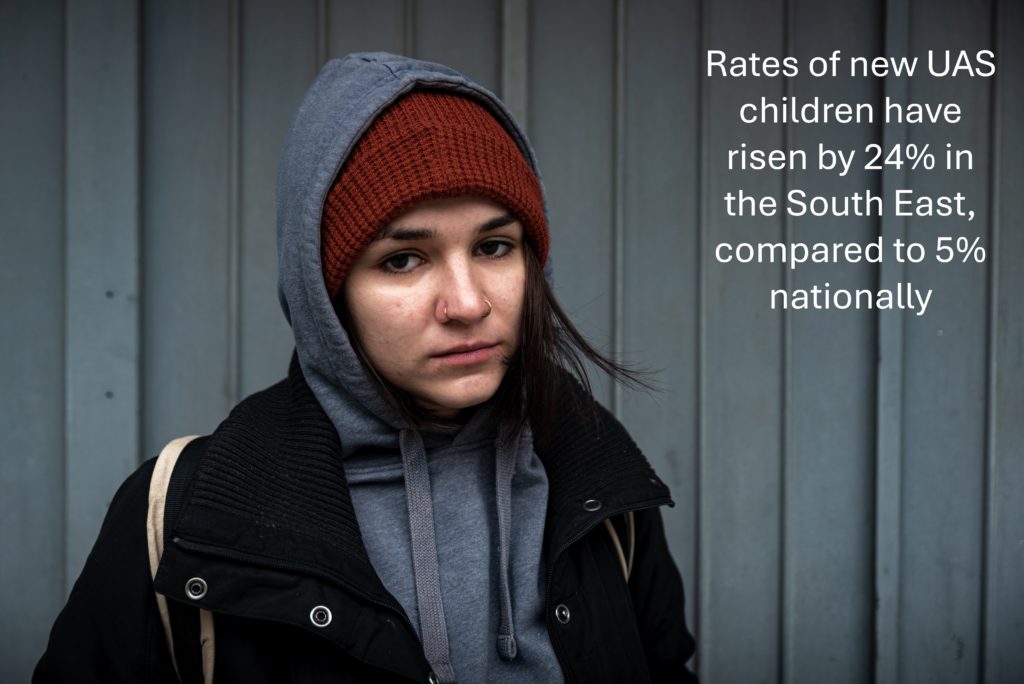
Message 3: We don’t know enough about what young people think
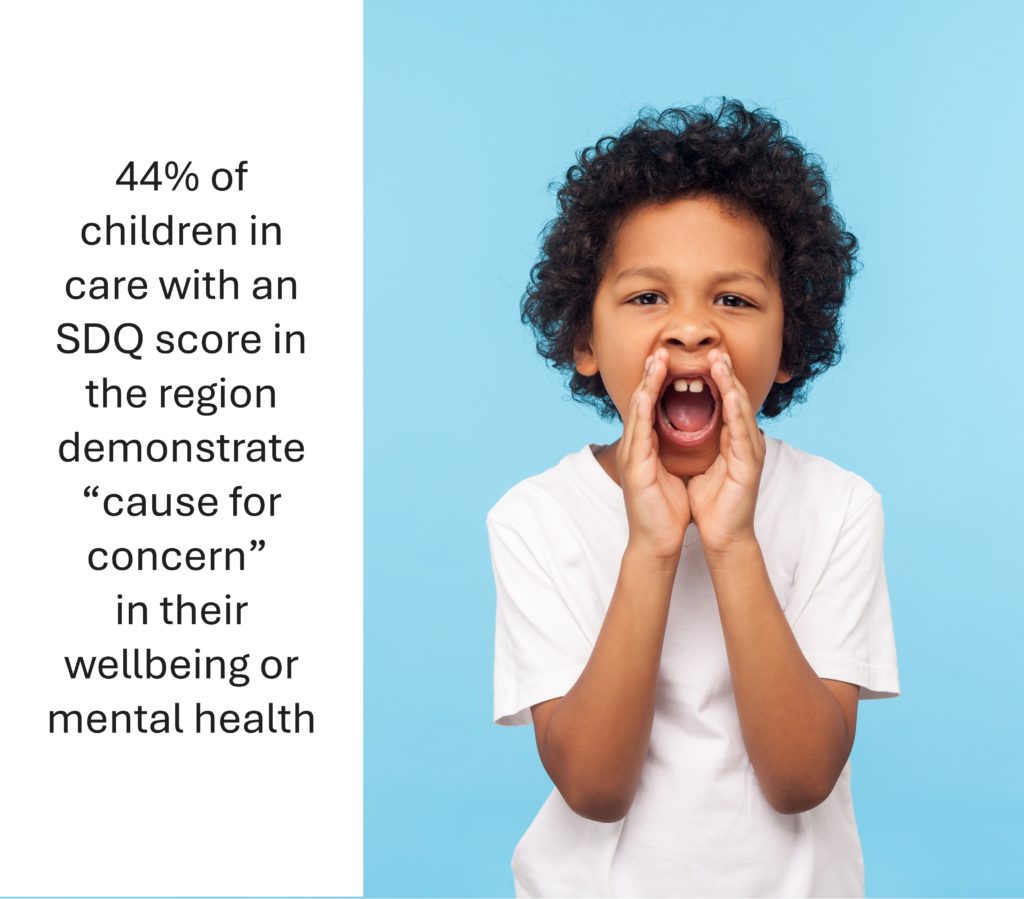
The DfE’s annual data out-turn is a valuable but insufficient source of information for understanding children’s wellbeing, and it does very little at all to help us understand what young people want from the care we provide, or what they feel is important in their lives.
We can see that, compared to the national averages, the South East has a higher proportion of frequent placement movers – 12% with 3+ placements during the year compared to 10% nationally – and a lower proportion of children in stable long term placements; 66% under 16 who’ve been in care for 2.5 years or more have been in the same placement for at least 2 years, compared to 68% nationally. From last year’s return (outcomes not yet published for this year’s return), we can see that educational attainment (both progress 8 and GCSE achievement) were below the national average in the SE. It’s hard to see how much these regional variations relate to variations in populations of UAS children.
National data also includes information about a Strengths and Difficulties Questionnaire (SDQ) for a subset of the children and young people covered by the return. We can see that 44% of children with an SDQ score in the South East demonstrated cause for concern for their mental health or wellbeing, compared to 41% nationally. This is part of a rising national trend, within which 43% of males had a score which was a cause for concern compared to 39% of females, and younger males were more likely than females to have scores which were a cause for concern; however, for 15- and 16-year olds females this gender imbalance was reversed. These data points help us identify some troubling questions, but they don’t help us find answers. As well as testing approaches to better understanding children’s needs and views, the RCC will develop the Southeast Youth Participation Collective, a ground-breaking initiative connecting participation workers from local authorities across the Southeast. This collaborative network is designed to amplify the voices of care-experienced young people, ensuring they are central to shaping the services that impact their lives. It will have real impact on the way we provide care in the region.
Message 4: The cost of high-cost placements is rising
As of 31 March 2024, the number of children’s homes of all types had increased nationally by 12% and the number of places had increased by 7% compared with 31 March 2023. Although there has been a 70% increase in the number of children’s homes since 2014, the number of placements has only increased by 25% to 14,486. We think providers are opening more and more 1-bed homes, which command higher overheads and higher prices than 2- or 3-bed homes.
Since 2014, there has been a decrease of 929 residential special school placements, from 2331 to 1402. Coupled with the increase in children with complex mental and physical health needs, this has placed increased pressure on residential placements to care for disabled children with complex needs.
In the South East, 4360 children were in private sector placements, with 1320 of these in residential homes, secure homes and residential schools.
Wider research by the Local Government Association (LGA) in 2023 highlighted that the average cost of residential care had risen beyond £5,000 per week, and that the rate of high-cost placements (those exceeding £10,000 per week) has risen more than tenfold since 2019 (from 120 to 1500). Since that research in 2023, LGA estimate a further 13.6% inflationary effect on these kinds of placement.
The RCC will leverage its regional scale to identify and deploy effective approaches to managing cost. As well as looking at contract negotiations, it will support capital projects to introduce new residential capacity in the regional. Perhaps most important of all, it will pioneer new regional approaches to better understanding the needs of children and young people, and ensuring that we can find placements to meet those needs without unnecessary escalation.
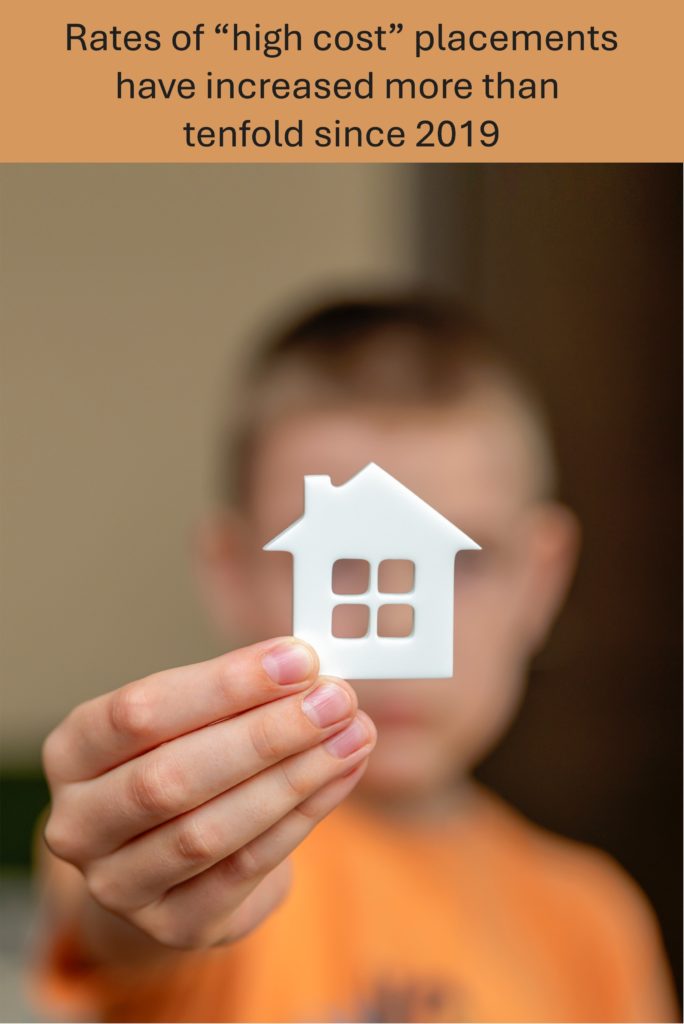
Message 5: Out-of-area placements are still too common
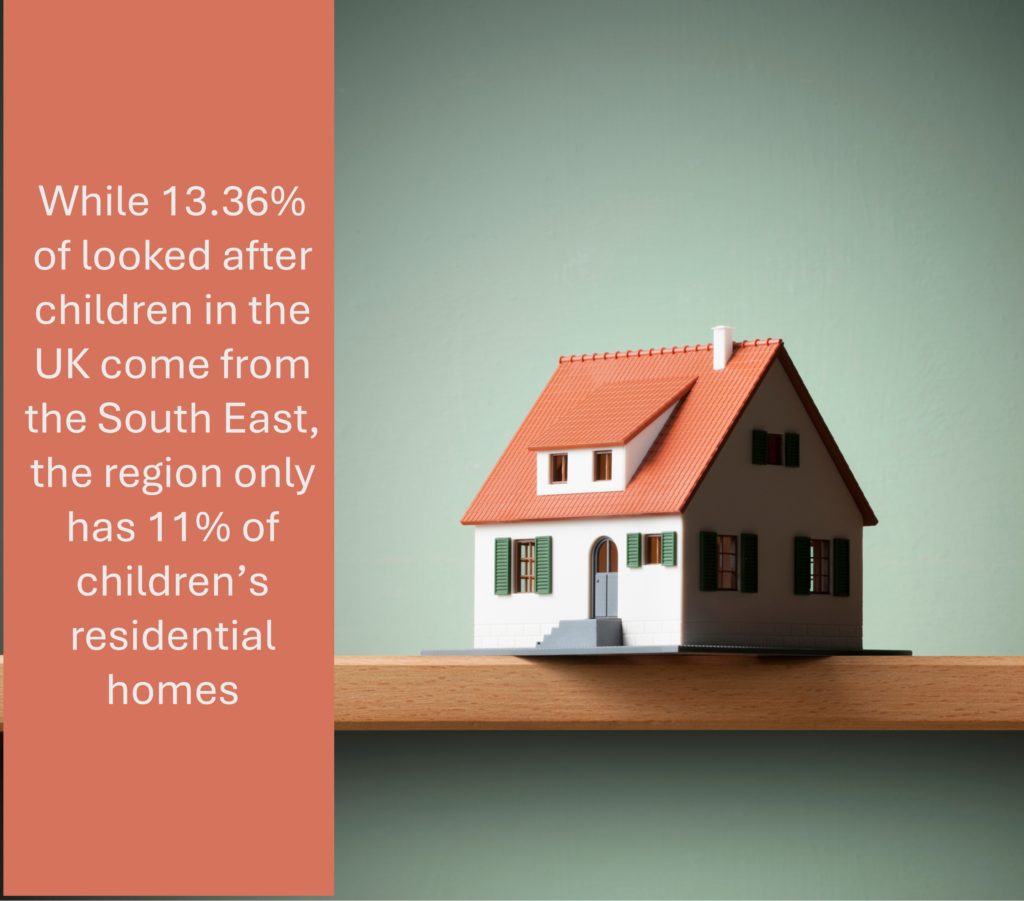
Across the South East last year, there were 3,200 children (28%) placed more than 20 miles away from their home, with 2,450 of these children being placed outside of their home LA. This is marginally less than last year – but in 2020, 400 fewer children (27%) were placed more than 20 miles from their home.
Looking specifically at residential care, we see that a quarter of the children’s homes and places in the UK are based in the North West. despite only 18% of the looked after children in the UK coming from that region. While 13.36% of looked after children in the UK come from the South East, the region only has 11% of children’s residential homes, representing 1762 placements.
Every LA has a legal duty to provide sufficient local care, and to plan for future sufficiency. As well as working directly to improve regional placement availability, the RCC will publish a regional sufficiency strategy in 2025 to support all partner LAs in this duty.
Message 6: It’s hard to bring the right information to the right people
The link is sometimes weak between our statistics and the questions we’re really trying to answer.
From the out-of-area placement statistics, we can’t see exactly how often we’re placing children outside our region, only outside individual LAs. From “outcomes” data like the SDQ or education achievements, we can’t see what children really think about the care we’re providing them, or what their lives are like. From our placement statistics we don’t know how often we’re securing the kind of placement we ideally wanted to secure. When we try to dig into the detail of any particular question, we find that our detailed statistics are flawed, because they look at such small numbers of children as to make changes statistically insignificant.
These challenges support our case for improving data capability across the RCC partnership, allowing us to analyse at scale across the region, and bringing best practice to all LAs as part of a focused drive to do the most cost effective, and impactful, data development possible.

For more information
The South East Regional Care Cooperative (RCC) is dedicated to enhancing outcomes for children in care. The statistics in this document illustrate the importance of this improvement work, and some of the ways change can happen.
